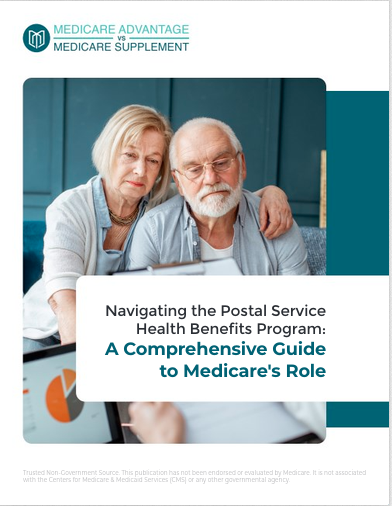Key Takeaways
-
Medicare in 2025 has evolved with changes to costs, coverage phases, and enrollment requirements you should understand before making decisions.
-
Knowing the structure of Parts A, B, C, and D and how they work together can help you avoid penalties, unexpected bills, and coverage gaps.
Understanding the Purpose of Medicare in 2025
Medicare exists to provide healthcare coverage for older adults and certain individuals with disabilities. In 2025, the program continues to serve people aged 65 and older, as well as younger individuals who meet specific disability requirements or have end-stage renal disease.
As you consider your healthcare needs, it’s important to recognize that Medicare is not a one-size-fits-all program. Instead, it’s structured into different parts, each covering a specific type of care.
Breaking Down the Parts of Medicare
Medicare is divided into four primary parts:
Medicare Part A: Hospital Insurance
Part A helps cover:
-
Inpatient hospital stays
-
Skilled nursing facility care (after a hospital stay)
-
Hospice care
-
Some home health care
For most people, there’s no monthly premium for Part A if you or your spouse worked and paid Medicare taxes for at least 10 years (40 quarters). In 2025, the inpatient hospital deductible is $1,676 per benefit period. Coinsurance kicks in after 60 days of hospital stay.
Medicare Part B: Medical Insurance
Part B covers:
-
Doctor visits
-
Outpatient care
-
Durable medical equipment
-
Preventive services
In 2025, the standard monthly premium for Part B is $185, and the annual deductible is $257. After the deductible, you typically pay 20% of the Medicare-approved amount for services.
Medicare Part C: Medicare Advantage
This is an alternative to Original Medicare (Parts A and B), offered by private insurance companies approved by Medicare. These plans must cover all services provided by Parts A and B but may also include additional benefits like dental, vision, or wellness programs.
While you can opt for Medicare Advantage, it’s important to know that plan offerings, costs, and benefits vary widely. You must still pay your Part B premium even if you choose Part C.
Medicare Part D: Prescription Drug Coverage
Part D plans cover prescription medications and are also offered through private insurers. In 2025, a major change has taken place: the out-of-pocket costs for prescription drugs now have a cap of $2,000 annually. Once you hit that threshold, the plan covers 100% of additional drug costs for the rest of the year.
When and How You Should Enroll
Timing is everything when it comes to Medicare. Enrolling too late or too early without understanding your options can result in penalties or missed opportunities.
Initial Enrollment Period (IEP)
You’re first eligible for Medicare around your 65th birthday. The Initial Enrollment Period spans:
-
3 months before the month you turn 65
-
The month of your 65th birthday
-
3 months after your birthday month
This gives you a total of 7 months to enroll.
General Enrollment Period (GEP)
If you missed your IEP, you can enroll from January 1 to March 31 each year. Your coverage begins the month after you sign up.
Medicare Advantage Open Enrollment Period
Between January 1 and March 31, if you’re already enrolled in a Medicare Advantage plan, you can switch to a different Medicare Advantage plan or go back to Original Medicare.
Annual Enrollment Period (AEP)
From October 15 to December 7, you can:
-
Switch from Original Medicare to a Medicare Advantage plan
-
Change from one Medicare Advantage plan to another
-
Enroll in, drop, or change a Part D plan
Special Enrollment Periods (SEPs)
Life changes such as moving, losing employer coverage, or becoming eligible for Medicaid can trigger a Special Enrollment Period. These allow you to make changes outside the standard windows.
What’s New in 2025?
Medicare has seen some updates this year that you should know:
-
Part D Cap: The $2,000 annual out-of-pocket maximum makes prescription costs more predictable.
-
Payment Flexibility: A new option allows you to spread your Part D out-of-pocket drug costs over the year through monthly payments.
-
Mid-Year Notifications: If you have a Medicare Advantage plan, you’ll receive a mid-year notification listing any unused supplemental benefits.
What Medicare Doesn’t Cover
Medicare covers a lot, but not everything. In 2025, these services remain largely excluded:
-
Long-term custodial care
-
Most dental care
-
Routine vision or hearing exams and devices
-
Overseas care (unless part of an approved emergency)
Some Medicare Advantage plans offer limited versions of these services, but always check the specifics.
Penalties You Might Not Expect
Delaying enrollment can cost you. Here are the key penalties in 2025:
-
Part B Late Enrollment Penalty: If you don’t sign up when first eligible and don’t qualify for a Special Enrollment Period, your premium may increase by 10% for each full 12-month period you delay.
-
Part D Late Enrollment Penalty: If you go 63 days or more without creditable drug coverage, you’ll face a penalty added to your monthly premium for as long as you have Part D.
Coordinating With Other Coverage
If you have retiree health benefits, VA coverage, or are still working with employer coverage, Medicare works alongside those benefits. How it coordinates depends on whether Medicare or the other insurance pays first. This is known as “payer status,” and you’ll want to confirm it to avoid billing confusion.
Comparing Original Medicare and Medicare Advantage
Here’s how they differ:
Original Medicare (Parts A & B)
-
See any doctor that accepts Medicare
-
Usually requires separate enrollment in Part D
-
Doesn’t include extra benefits like dental or vision
-
No annual out-of-pocket limit (unless you add supplemental coverage)
Medicare Advantage (Part C)
-
Network restrictions may apply (HMO or PPO structure)
-
May include extra benefits
-
Out-of-pocket limits are included
-
Requires careful review each year during AEP due to changing plan details
Supplemental Coverage: Medigap
Medigap policies help cover out-of-pocket costs under Original Medicare, like copayments, coinsurance, and deductibles. These plans are standardized and labeled by letters (A-N). You can’t enroll in both Medigap and Medicare Advantage at the same time.
The best time to buy a Medigap policy is during your 6-month Medigap Open Enrollment Period, which starts the month you’re 65 and enrolled in Part B. During this time, companies can’t deny you coverage based on pre-existing conditions.
Preventive Services You Can Use in 2025
Medicare continues to offer a wide range of preventive services at no additional cost to you, as long as the provider accepts Medicare. These include:
-
Annual wellness visit
-
Flu, pneumonia, COVID-19, and hepatitis B vaccines
-
Screenings for cancer, diabetes, and heart conditions
-
Depression screening
-
Tobacco use cessation counseling
Staying up to date on these services can help you maintain your health and avoid costly treatments down the road.
Getting Help When It’s Time to Decide
Medicare decisions aren’t always straightforward. Whether you’re new to the program or reviewing your options during enrollment season, professional guidance can help. A licensed agent can walk you through the parts, costs, and comparisons in a way that matches your health and financial needs.
Know the Essentials to Make Confident Medicare Choices
Understanding the basics of Medicare in 2025 is your first step toward building a solid healthcare foundation. By learning about costs, enrollment periods, and available benefits, you can make informed decisions that protect both your health and your wallet.
For personalized advice tailored to your situation, reach out to a licensed agent listed on this website. They’re ready to help you find the right coverage without the guesswork.









